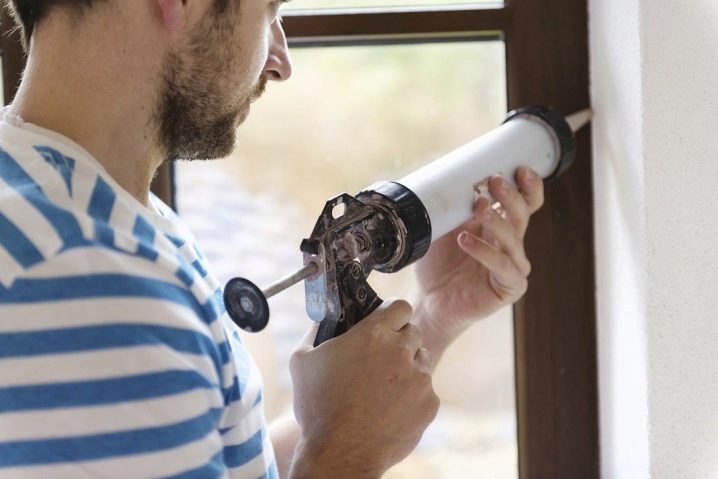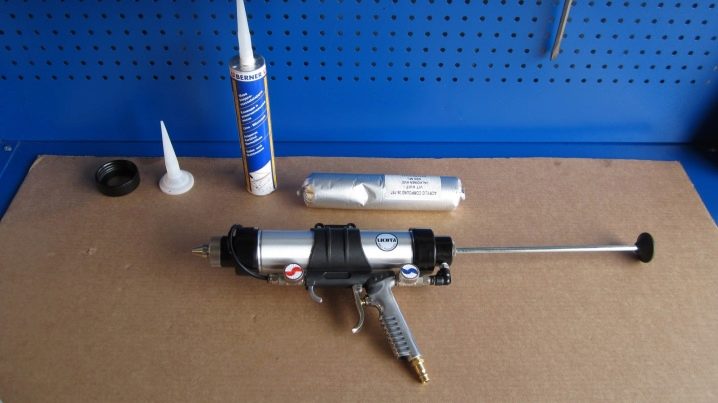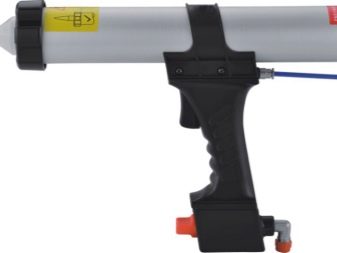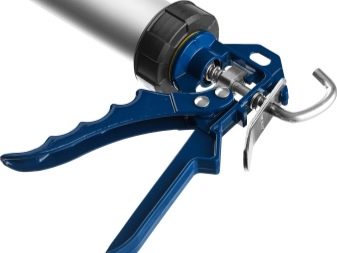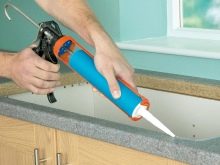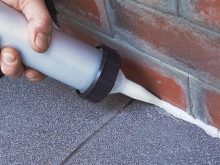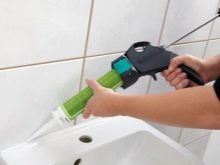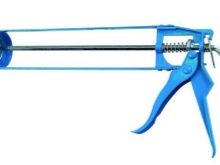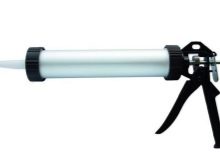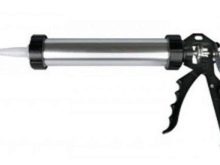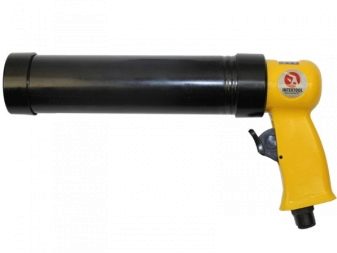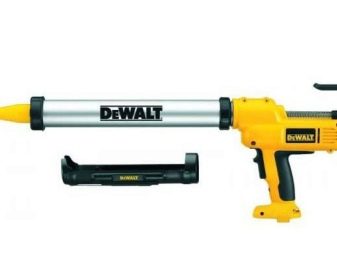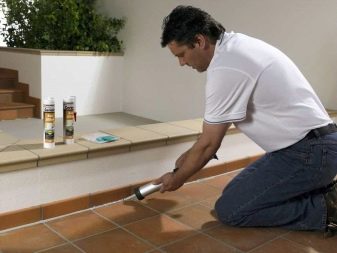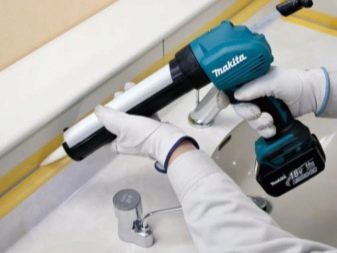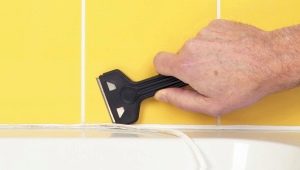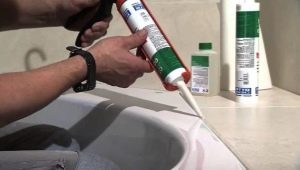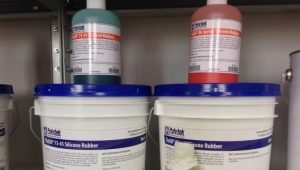Closed professional gun for sealant: the pros and cons
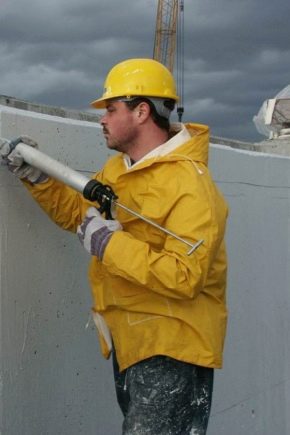
It is impossible to apply an even and high-quality sealant without special tools, especially for an inexperienced master. Therefore, both in everyday life and in the professional performance of construction work, various versions of special pistols are almost universally applied. It is worth considering the pros and cons of closed professional guns for applying sealants.
Species
At present, it is customary to separate construction guns according to the drive used and design features. Both classifications should be considered in more detail.
Drive unit
The principle of operation of absolutely all existing devices for applying sealing materials today consists in pushing a mass of material with a piston through an opening.
According to the source of force acting on the piston, guns for sealant are divided into the following types:
- mechanicalin which the muscular effort of the operator is transmitted to the piston through a system of levers;
- electric - in them the rotational movement of the electric motor is converted into a forward movement, pushing the material out of the container;
- pneumatic - in such tools the necessary effort is created by a stream of compressed air; they allow you to perform huge amounts of work, so they have a very high sales rating, but are used mainly in large construction sites.
Electrical tools are further divided into battery powered and requiring electrical connection for their work.
Design
Depending on the design, guns for sealing materials are divided into the following types:
- skeletal - these are the simplest tools, designed to fix ready-made containers with material in them, in fact, they are presented in the form of a simple steel frame with a piston; because of their simplicity and ease, they are usually produced mechanically and are designed exclusively for small household repairs;
- semi-hull - represent the “half pipe” of steel with a piston, they are also usually produced with a mechanical drive and are not intended for professional use;
- closed - have a full capacity for the material used, are filled from containers of any size on the principle of "return piston" - like filling a syringe from an ampoule; They come with any drive and are considered professional.
Benefits
The main advantage of the closed type of instrument is reliability compared to the open and half-open variants, which tend to deform after use with 2–4 capacities of the material. Owners of such products can, in principle, forget about the phenomenon of piston tilt, which is often what skeletal models sin. Another important advantage of such a gun is its independence from the size of the acquired containers of sealing material, since in a closed case you can take a sealant from any package. At the same time, a wide range of closed instruments of various sizes is currently being produced. Simple mechanical options are available with a capacity of 310 ml (for example, T4P in an aluminum case), 400 ml (Kaem 2050-180400), 420 ml ("Steel" 31105) and 600 ml ("Steel" 31104).
Even from the point of view of user convenience, such tools benefit both the skeletal and semi-corpus tools, because they do not need to fix the cartridge. It is in the closed version most often non-mechanical versions of this tool are produced. So, in everyday life is quite applicable to both the pneumatic Intertool PT-0601 and the battery-powered DeWalt DC542K. Automated versions of such products have many other nice bonuses - this is a smooth adjustment of the rate of extrusion of the material, automatic punch working holes, lights, and others. Often, such products are supplied complete with a variety of nozzles, allowing you to vary the thickness and other characteristics of the applied seam.
So, if you need to make a seam in the car, the owners of case tools will not waste time searching for the desired nozzle on the market.
disadvantages
The main disadvantage of closed guns is their much higher price compared to other options. The main source of problems when working with such a tool is its dependence on the tightness of the case. If slight damage to the skeletal and semi-corpus variant is notharming their functionality, the through hole in the tank of a closed gun leads to the need to repair it. An additional disadvantage of pneumatic models is the need to refill compressed air with cylinders for models equipped with them, or to connect to a bulky and expensive installation that compresses air.
The main drawback of battery models is the need to replace or recharge batteries, which limits their applicability in the case of large volumes of planned work.
Tips
Thus, if you need to make 1-2 seams in the bathroom or car, buy a closed option to anything. If there is a need for regular repairs, it is worth thinking about purchasing a simple mechanical model like T4P. Well, for the pros are suitable automated options.
In more detail how to use the closed gun for sealant, the following video will tell.
